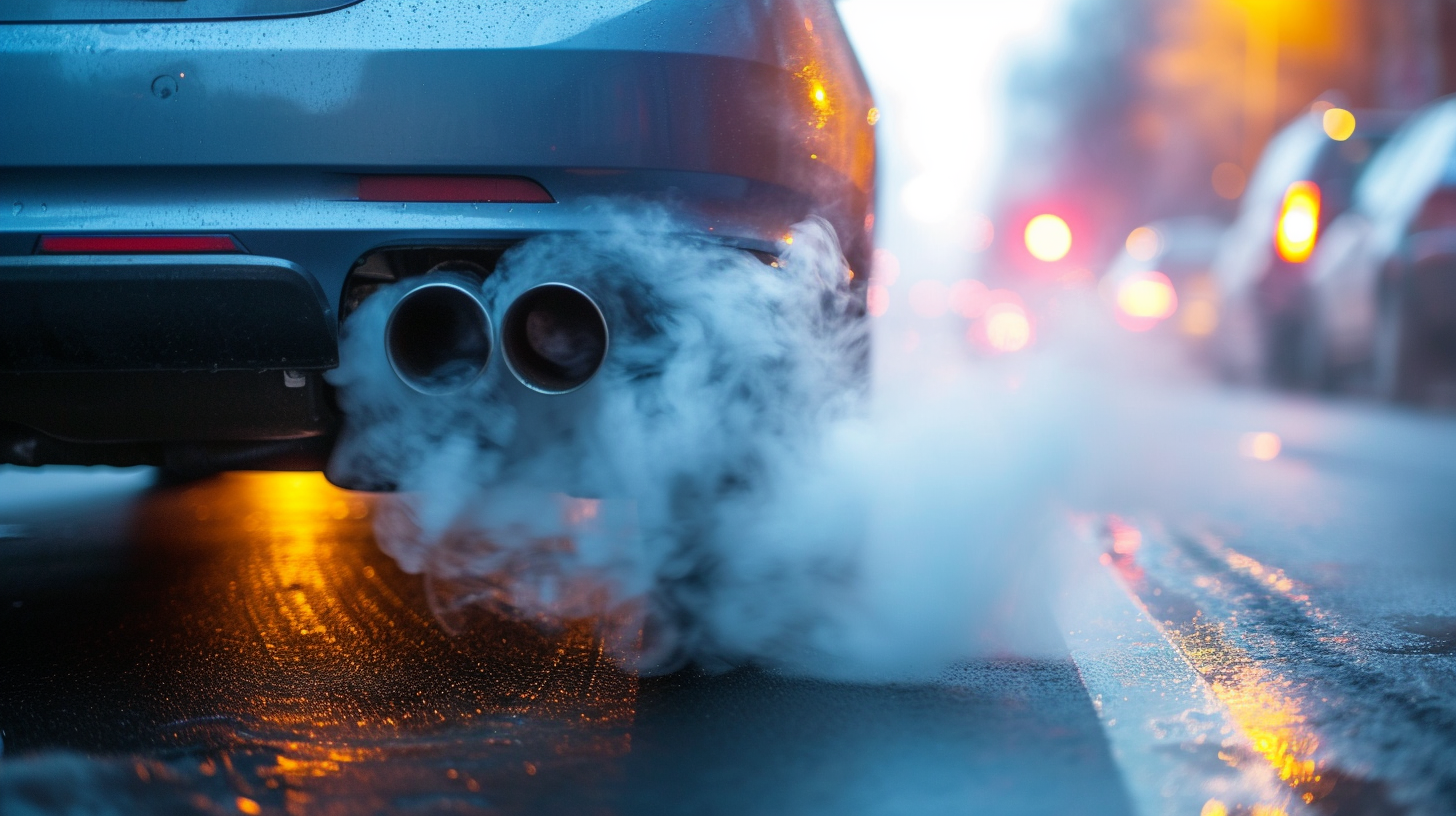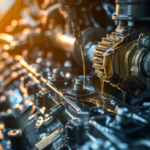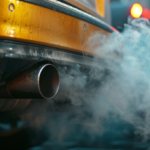Are you noticing strange noises or a decrease in your car’s performance? It could be a sign of an exhaust leak. In this article, we’ll show you how to detect and fix car exhaust leaks. With just a few tools and some simple steps, you’ll be able to locate the source of the leak and make necessary repairs. Don’t let a leaky exhaust system drag you down – take action and get back on the road with confidence.
Common Signs of Car Exhaust Leaks
If you suspect that your car has an exhaust leak, there are several common signs that you can look out for. One of the most noticeable signs is a loud rumbling or hissing noise coming from the engine or underneath the car. You may also notice a strong smell of exhaust fumes inside the cabin, especially when the car is idling or when you accelerate. Another common sign is a decrease in fuel efficiency, as the leak can disrupt the proper functioning of the engine. Additionally, if you see black soot or residue on the tailpipe or around the exhaust system, it could indicate a leak. Lastly, if you experience a loss of power or poor acceleration, it could be a result of an exhaust leak affecting the engine’s performance.
Tools You’ll Need to Detect Exhaust Leaks
To detect exhaust leaks, you’ll need a few essential tools. The first tool you’ll need is a mechanic’s stethoscope. This tool allows you to listen for any unusual sounds coming from the exhaust system, which can indicate a leak. Another important tool is a smoke machine. By introducing smoke into the exhaust system, you can easily identify any leaks by looking for smoke escaping from the pipes or joints. A handheld propane torch can also come in handy. By running the torch along the exhaust system, you can detect leaks by looking for any changes in flame color or flickering flames, which can indicate a leak. Lastly, a good quality flashlight is essential for inspecting the exhaust system thoroughly. It will help you see any cracks, holes, or rust that may be causing the leak. With these tools in hand, you’ll be well-equipped to detect and fix any car exhaust leaks.
Step-by-Step Guide to Inspecting Your Exhaust System
Start by visually inspecting your exhaust system for any signs of damage or leaks. Look for any holes, cracks, or rust on the pipes and muffler. Pay attention to any loose or disconnected parts as well. Use a flashlight to get a better view of hard-to-reach areas. Check the exhaust manifold gasket for any signs of wear or leakage. Inspect the exhaust hangers and brackets to ensure they are secure and not broken. Listen for any unusual noises or rattling sounds when the engine is running. If you notice any of these issues, it is important to address them promptly to prevent further damage and potential safety hazards.
How to Locate the Source of an Exhaust Leak
Now that you’re aware of the common symptoms of an exhaust leak and the importance of inspecting your exhaust system, it’s time to locate the source of the leak. Fortunately, there are a few techniques you can use to pinpoint the exact location. By following these steps, you’ll be able to identify the source and move on to exploring DIY repair options.
Common Leak Symptoms
Are you experiencing any of the common symptoms that could indicate an exhaust leak in your car? It’s important to be aware of these signs as they can help you locate the source of the leak and get it fixed promptly. One common symptom is a loud hissing or popping noise coming from the engine or exhaust system. This can indicate a hole or crack in the exhaust manifold or pipe. Another symptom is a strong smell of exhaust fumes inside the car. If you notice this, it could mean that exhaust gases are leaking into the cabin through a damaged seal or gasket. Additionally, you may see black soot or residue around the exhaust pipe, indicating a leak. Paying attention to these symptoms can help you identify and fix an exhaust leak before it causes further damage to your car.
Inspection Techniques
If you suspect an exhaust leak in your car, there are several inspection techniques you can use to locate the source of the problem. The first step is to visually inspect the exhaust system for any signs of damage or corrosion. Look for any loose or disconnected components, holes, or cracks in the pipes and muffler. You can also run your hand along the exhaust system while the engine is running to feel for any air escaping. Another method is to use a piece of cloth or tissue paper and hold it near the suspected areas. If there is an exhaust leak, the cloth or paper will flutter or blow away. Lastly, you can use a mechanic’s stethoscope or a length of hose to listen for hissing or whistling sounds indicating the location of the leak. By using these inspection techniques, you can easily identify and fix any exhaust leaks in your car.
DIY Repair Options
To locate the source of an exhaust leak in your car, you can start by visually inspecting the exhaust system for any signs of damage or corrosion. Look for any visible cracks, holes, or loose connections in the pipes, muffler, or catalytic converter. Pay close attention to areas where different components are joined together, as these are common areas for leaks to occur. If you don’t see any obvious signs of damage, you can also try using a handheld propane torch to help detect the leak. With the engine running, slowly move the flame along the length of the exhaust system while listening for any changes in the engine sound. If the engine revs or sputters, it could indicate a leak near the area where the sound changes.
DIY Methods for Temporary Exhaust Leak Fixes
Try using a temporary patch or sealant compound to fix the car exhaust leak. These DIY methods can provide a temporary solution until you can get your vehicle to a professional for a permanent fix. One option is to use a patch kit specifically designed for exhaust leaks. These kits typically include a heat-resistant tape or bandage that can be wrapped around the damaged area to create a temporary seal. Another option is to use an exhaust sealant compound. This compound is applied directly to the leaky area and hardens to form a temporary seal. Keep in mind that these temporary fixes are not meant to be long-term solutions and may not hold up under extreme conditions. It is still important to have your exhaust system properly repaired as soon as possible.
Repairing Exhaust Leaks With Sealants and Adhesives
Now let’s talk about how to effectively repair exhaust leaks using sealants and adhesives. You’ll learn about different techniques for applying sealants, considerations for selecting the right adhesive, and how to ensure long-term leak prevention. By understanding these points, you’ll be equipped to fix your car’s exhaust leaks and keep your vehicle running smoothly.
Sealant Application Techniques
You can easily repair car exhaust leaks by applying sealants and adhesives with proper techniques. When it comes to sealant application, it is important to start with a clean and dry surface. Use a wire brush or sandpaper to remove any rust or debris from the area of the leak. Next, apply the sealant or adhesive according to the manufacturer’s instructions. It is crucial to apply an even and consistent layer of sealant to ensure a proper seal. Make sure to cover the entire area of the leak, as well as any surrounding cracks or gaps. Once the sealant is applied, allow it to dry completely before starting the engine. This will ensure that the sealant has enough time to cure and create a strong bond. By following these sealant application techniques, you can effectively repair car exhaust leaks and prevent further damage to your vehicle.
Adhesive Selection Considerations
But if you want to effectively repair car exhaust leaks with sealants and adhesives, you must carefully consider your adhesive selection. Choosing the right adhesive is crucial to ensure a long-lasting and reliable repair. One important factor to consider is the temperature resistance of the adhesive. Since car exhaust systems can reach high temperatures, it is essential to select an adhesive that can withstand these extreme conditions without losing its bonding properties. Additionally, the adhesive should be able to adhere to different materials commonly found in exhaust systems, such as metal and rubber. It is also important to choose an adhesive that can provide a strong and durable bond, as exhaust systems are subjected to vibrations and movement. By carefully considering these factors, you can select the right adhesive to effectively repair car exhaust leaks and ensure the longevity of the repair.
Long-Term Leak Prevention
Using sealants and adhesives is an effective method for preventing long-term leaks in your car’s exhaust system. These products work by creating a tight seal between the different components of the exhaust system, such as the pipes, muffler, and catalytic converter. Before applying any sealant or adhesive, it is important to clean the surfaces thoroughly to ensure maximum adhesion. Once cleaned, you can apply the sealant or adhesive according to the manufacturer’s instructions. It is crucial to choose a high-quality product that is specifically designed for automotive applications. Additionally, make sure to check the compatibility of the sealant or adhesive with the materials used in your exhaust system. Regularly inspecting your car’s exhaust system and addressing any leaks promptly can help prevent further damage and ensure the longevity of your vehicle.
Replacing Damaged Exhaust Components
If your car has a damaged exhaust component, it is important to replace it as soon as possible. Continuing to drive with a damaged exhaust component can lead to further damage, decreased fuel efficiency, and even potential safety hazards. The first step in replacing a damaged exhaust component is identifying the specific part that needs to be replaced. This can be done by inspecting the exhaust system for any visible signs of damage, such as holes, cracks, or rust. Once the damaged component has been identified, it is crucial to purchase a high-quality replacement part that is compatible with your car’s make and model. Finally, the damaged component can be removed and the new one can be installed using the appropriate tools and techniques. Remember, replacing a damaged exhaust component promptly will help ensure the proper functioning and longevity of your car’s exhaust system.
Tips for Preventing Future Exhaust Leaks
To prevent future exhaust leaks, you should regularly inspect and maintain your car’s exhaust system. Start by checking for any signs of damage or wear on the exhaust pipes, muffler, and catalytic converter. Look out for rust, cracks, or loose connections. If you notice any issues, it’s important to address them promptly to prevent further damage. Additionally, make sure to have your car’s exhaust system inspected by a professional at least once a year, or more frequently if you drive in harsh conditions. Regular maintenance, such as tightening loose connections, replacing worn-out gaskets, and cleaning the exhaust system, will help prevent leaks and ensure optimal performance. Taking these preventive measures will not only extend the lifespan of your exhaust system but also contribute to a safer and more efficient driving experience.
Importance of Regular Exhaust System Maintenance
Regular maintenance is essential for ensuring the longevity and efficiency of your car’s exhaust system. By regularly inspecting and maintaining your exhaust system, you can prevent potential issues from escalating into costly repairs. Regular maintenance allows you to identify and address any leaks or damage early on, minimizing the risk of further damage. Moreover, a well-maintained exhaust system ensures that harmful emissions are properly filtered and released, reducing environmental pollution. Additionally, regular maintenance helps to optimize the performance of your vehicle by ensuring that the exhaust system is functioning at its best. This can result in improved fuel efficiency and overall engine performance. Don’t overlook the importance of regular exhaust system maintenance. By taking proactive measures, you can keep your car running smoothly and extend the lifespan of your exhaust system.
When to Seek Professional Help for Exhaust Leak Repairs
If you suspect an exhaust leak and have tried DIY repairs without success, it’s time to seek professional help to ensure your car is running safely and efficiently. While attempting to fix an exhaust leak yourself can be tempting, it’s important to recognize when the problem exceeds your capabilities. Professional mechanics have the knowledge, experience, and tools necessary to accurately diagnose and repair exhaust leaks. They can pinpoint the exact source of the leak and determine the appropriate solution, whether it requires patching a small hole, replacing a damaged component, or even installing a completely new exhaust system. By seeking professional help, you can save yourself time, money, and potential safety risks associated with a faulty exhaust system. Don’t hesitate to consult a professional if you’re unsure about your ability to fix an exhaust leak on your own.

Lucas is an experienced vehicle technician with hands-on knowledge of almost every car brand available. Throughout his career, Lucas has worked on a wide range of vehicles, including domestic and foreign models, sports cars, trucks, and SUVs.





